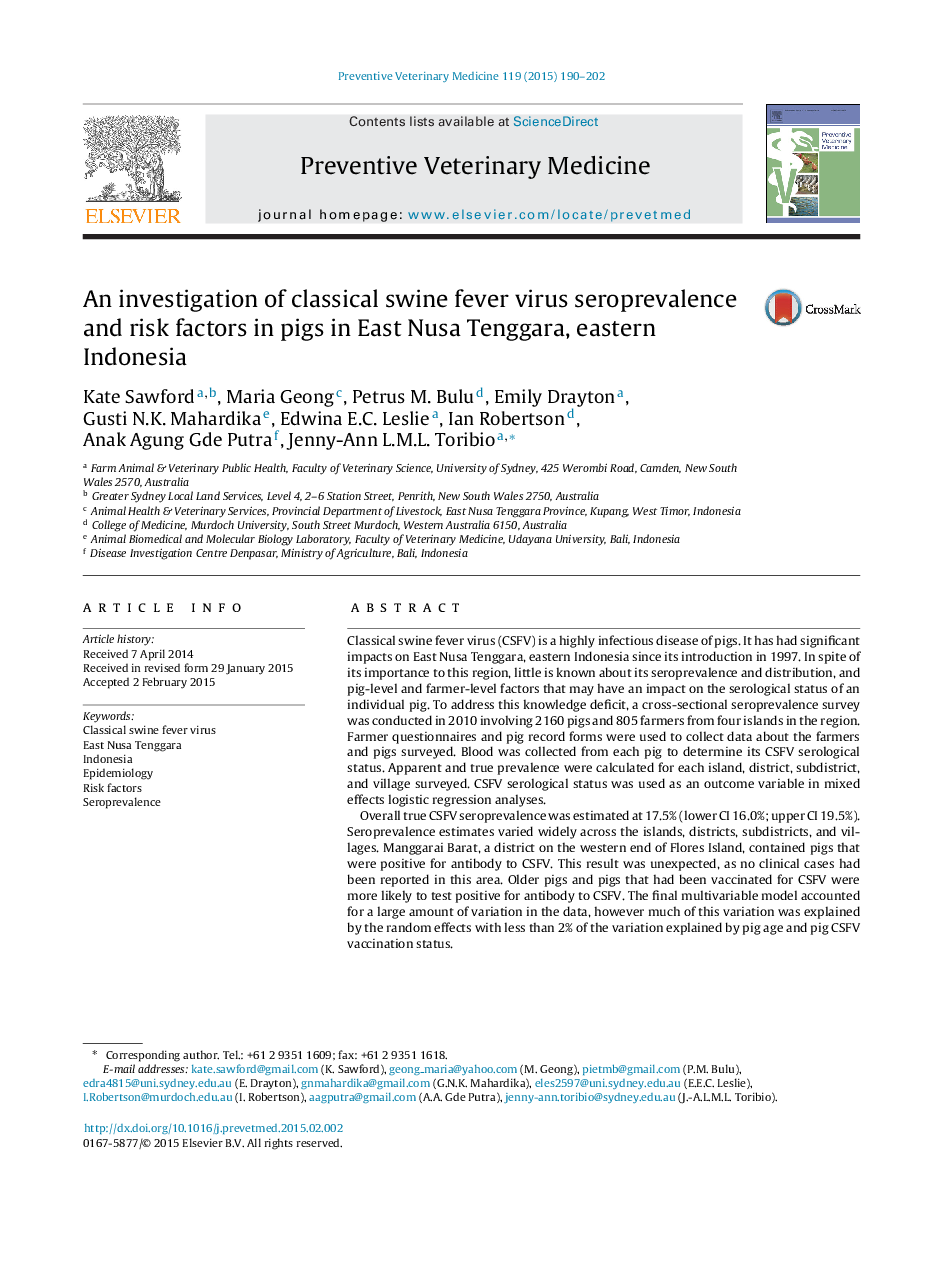| کد مقاله | کد نشریه | سال انتشار | مقاله انگلیسی | نسخه تمام متن |
|---|---|---|---|---|
| 5793272 | 1554170 | 2015 | 13 صفحه PDF | دانلود رایگان |

- Seroprevalence varied widely at various levels of spatial aggregation.
- Pigs positive for CSFV antibody in areas with no vaccination or reported cases.
- Levels of herd immunity inadequate for disease control.
Classical swine fever virus (CSFV) is a highly infectious disease of pigs. It has had significant impacts on East Nusa Tenggara, eastern Indonesia since its introduction in 1997. In spite of its importance to this region, little is known about its seroprevalence and distribution, and pig-level and farmer-level factors that may have an impact on the serological status of an individual pig. To address this knowledge deficit, a cross-sectional seroprevalence survey was conducted in 2010 involving 2160 pigs and 805 farmers from four islands in the region. Farmer questionnaires and pig record forms were used to collect data about the farmers and pigs surveyed. Blood was collected from each pig to determine its CSFV serological status. Apparent and true prevalence were calculated for each island, district, subdistrict, and village surveyed. CSFV serological status was used as an outcome variable in mixed effects logistic regression analyses.Overall true CSFV seroprevalence was estimated at 17.5% (lower CI 16.0%; upper CI 19.5%). Seroprevalence estimates varied widely across the islands, districts, subdistricts, and villages. Manggarai Barat, a district on the western end of Flores Island, contained pigs that were positive for antibody to CSFV. This result was unexpected, as no clinical cases had been reported in this area. Older pigs and pigs that had been vaccinated for CSFV were more likely to test positive for antibody to CSFV. The final multivariable model accounted for a large amount of variation in the data, however much of this variation was explained by the random effects with less than 2% of the variation explained by pig age and pig CSFV vaccination status.In this study we documented the seroprevalence of CSFV across four islands in East Nusa Tenggara, eastern Indonesia. We also identified risk factors for the presence of antibody to CSFV. Further investigation is needed to understand why clinical CSFV has not been reported on the western end of Flores Island, and to identify additional risk factors that explain CSFV serological status to inform disease control strategies.
Journal: Preventive Veterinary Medicine - Volume 119, Issues 3â4, 1 May 2015, Pages 190-202